Imperial War Museum - Schutte Lanz SL11 Airship
Imperial War Museum - Extraordinary Heroes
Schutte Lanz SL11 Airship
In October 2009 Berry Place was contacted by The Imperial War Museum regarding the addition of a new gallery entitled ‘Extraordinary Heroes’ to its main site in Lambeth. The new interactive gallery would display stories, digital content, objects, models and of course medals that related to many tales of heroic endeavour – the exponents of which became recipients of either the George Cross or Victoria Cross.
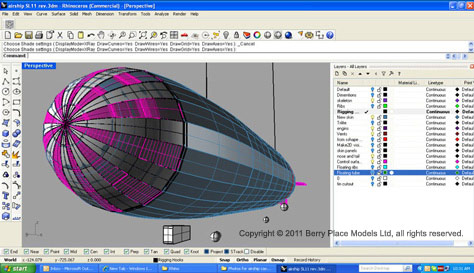
Initially we were involved in costing a number of items, which gradually became refined down to half a dozen or so showpieces, many of which would be rigged above the visitor’s heads. The first of these ‘attractors’ (commissioned through Scena Productions) was the 15-foot long Schutte Lanz SL11 airship, which represented the German SL11 shot down over North London by Lieutenant William Robinson VC during WW1.
With very little available reference material or text data to construct a design from, we essentially took what little material we had for the SL11 and patched the holes with data and information from other Schutte Lanz models of a similar period. This allowed a 3D drawing to be assembled for client & designer input.
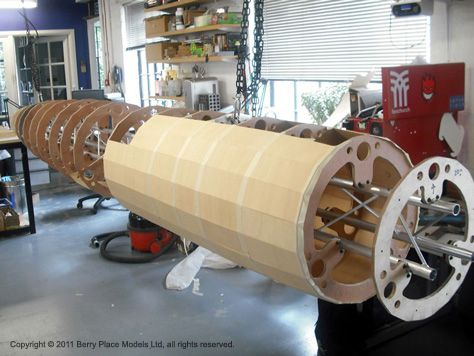
Once signed off with the designers, Casson Mann, work began to assemble a rigid core from which the airship could be constructed around and which would provide a solid platform for cabling up to the roof. This Trilite core was then fitted with a series specifically sized ribs and skinned in 2mm thick aero-ply to give the airship it’s main body. Seven access doors were incorporated into the airship along its upper flank so that we could mount the four engine pods, the gondola car, the nose and tail and the four control surfaces.
From this data the nose and the tail cone were isolated and worked on as separate digital components. Wall thicknesses were determined and fixing plates added so that stereo-lithographic (SLA) components could be built which would correspond exactly to the main body.
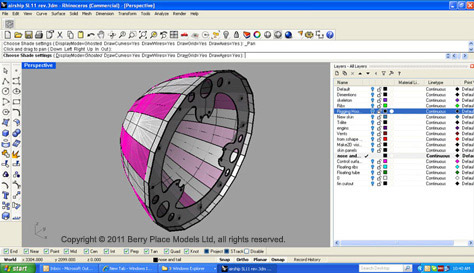
These new components were then added to the part built superstructure along with the four control surfaces before everything was skinned in an iron-on woven polyester fabric and art-worked to suit. This proved to be relatively tricky since the only photographic reference we had of any airship from this period was black & white and all of the SL airships from this period were destroyed.
The gondola car and engines were already being fabricated and before long we were able to offer them up and check how they would integrate with the structure and start to plan how the high-tension wires would be fitted.
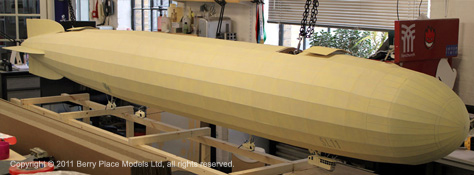
With all the detailing and nose & tail sections being de-mountable, the next headache was getting the airship body into the building. It had been deliberately planned as a single part build as opposed to a multi-part to eliminate risk of misalignment, but this strategy did only leave us one way to enter the building. From the outset we had planned to make use of the Scena’s external hoist to take the airship up 5 floors to the gallery space and then insert it through a removed window, since the stairwells would not allow us the turning circle we needed.
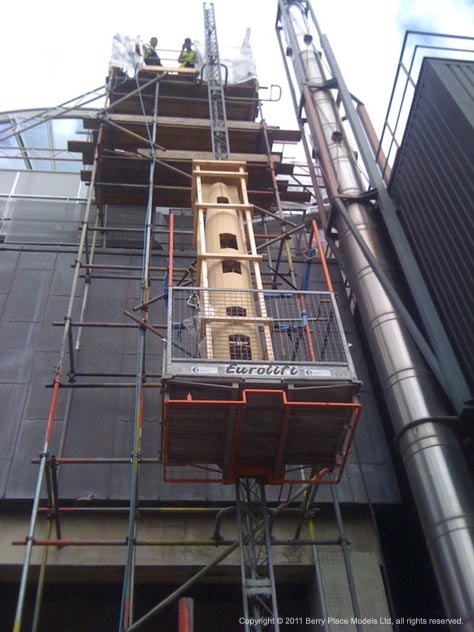
When the airship was in, and our hearts were back out of our mouths, we began a final detailing phase prior to rigging the model up to the ceiling; this consisted of reattaching all the small fragile components, which had been constructed back in the workshop, and adding the scaled high-tension cable. Unusual rigging’ were on hand to organise wiring the airship into place, and when the airship position was OK’d with Casson Mann we were all able to finally breathe easy.
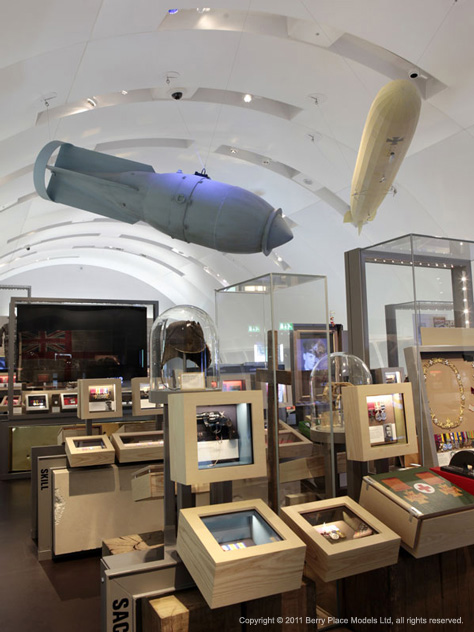
Client – Scena Projects
End Client – The Imperial War Museum London

